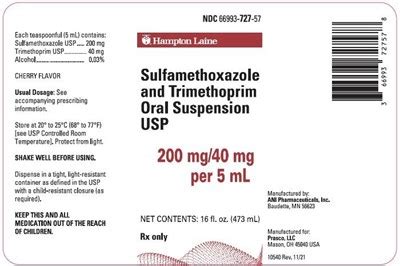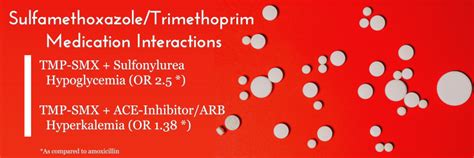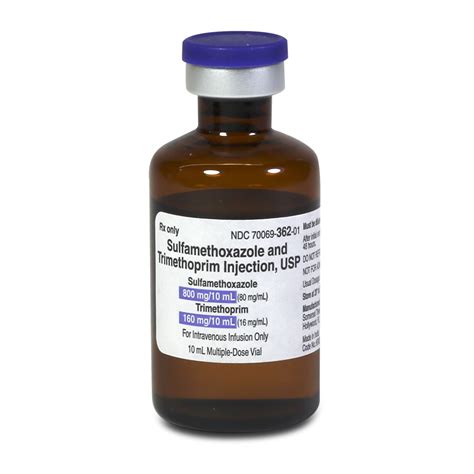Intro
Discover 7 Sulfameth Trimethoprim side effects, including allergic reactions, nausea, and diarrhea, plus rare interactions like Stevens-Johnson syndrome, affecting skin, kidneys, and liver, with antibiotic resistance risks.
The importance of understanding the potential side effects of medications cannot be overstated, especially when it comes to antibiotics like Sulfamethoxazole/Trimethoprim, commonly known as Sulfameth/Trimethoprim or simply SMZ/TMP. This combination antibiotic is used to treat a wide range of bacterial infections, including urinary tract infections, bronchitis, and traveler's diarrhea, among others. Its effectiveness in combating bacterial infections has made it a staple in the medical community. However, like all medications, it comes with its own set of side effects, some of which can be quite serious.
Sulfamethoxazole and Trimethoprim work synergistically to inhibit the growth of bacteria by interfering with the production of folic acid, which is essential for bacterial DNA synthesis. While this mechanism is effective against bacteria, it can also affect human cells, leading to various side effects. The severity and frequency of these side effects can vary greatly among individuals, depending on factors such as the dosage, duration of treatment, and individual susceptibility. It's crucial for patients to be aware of the potential side effects to ensure they can manage them effectively and seek medical help if necessary.
Understanding the side effects of Sulfameth/Trimethoprim is not just about recognizing the symptoms; it's also about grasping the importance of adherence to the prescribed treatment regimen and the need for monitoring by healthcare professionals. This knowledge empowers patients to take an active role in their health care, fostering a collaborative relationship between patients and healthcare providers. By being informed, individuals can better navigate the treatment process, making decisions that optimize the benefits of the medication while minimizing its risks.
Introduction to Sulfameth/Trimethoprim

Sulfamethoxazole and Trimethoprim are two antibiotics that are often prescribed together to treat various bacterial infections. Sulfamethoxazole belongs to the class of drugs known as sulfonamides, while Trimethoprim is a dihydrofolate reductase inhibitor. When used in combination, they provide a broad spectrum of antibacterial activity, making them effective against a wide range of gram-positive and gram-negative bacteria. This combination is particularly useful because it can be administered orally, making it a convenient option for outpatient treatment.
Common Side Effects of Sulfameth/Trimethoprim

Some of the most common side effects of Sulfameth/Trimethoprim include:
- Nausea and vomiting
- Diarrhea
- Abdominal pain
- Headache
- Dizziness
- Rashes
- Itching
These side effects are typically mild and transient, resolving on their own once the medication is stopped. However, in some cases, they can be severe and require medical attention.
Severe Side Effects
While less common, severe side effects can occur with the use of Sulfameth/Trimethoprim. These include: - Stevens-Johnson syndrome, a rare but serious disorder of the skin and mucous membranes - Toxic epidermal necrolysis, a condition where the skin peels off in large areas - Anaphylaxis, a severe, life-threatening allergic reaction - Agranulocytosis, a potentially life-threatening reduction in white blood cells - Thrombocytopenia, a condition characterized by low platelet count - Kidney damage or failure - Liver damage or failurePrecautions and Warnings

Given the potential for severe side effects, it's essential for patients to be aware of certain precautions and warnings. For instance, Sulfameth/Trimethoprim should be used with caution in patients with kidney or liver disease, as it can exacerbate these conditions. Patients with a history of allergic reactions to sulfa drugs or trimethoprim should inform their healthcare provider before starting treatment. Additionally, because Sulfameth/Trimethoprim can increase the risk of kernicterus in newborns, it should be used with caution in pregnant women, particularly near term.
Patient Monitoring
Regular monitoring by a healthcare provider is crucial during treatment with Sulfameth/Trimethoprim, especially for patients at higher risk of side effects. This includes monitoring of kidney and liver function, as well as blood counts to detect any adverse effects on the bone marrow. Patients should also be advised to report any signs of allergic reactions, such as rash, itching, or difficulty breathing, immediately.Drug Interactions

Sulfameth/Trimethoprim can interact with a variety of other medications, either enhancing their effects or increasing the risk of side effects. For example, when used with certain anticoagulants (blood thinners), it can increase the risk of bleeding. It can also interact with methotrexate, a medication used to treat cancer and autoimmune diseases, increasing the risk of methotrexate toxicity. Patients should inform their healthcare provider about all medications they are taking, including over-the-counter drugs and supplements, to minimize the risk of drug interactions.
Special Considerations
Special consideration should be given to certain patient populations, including the elderly, pregnant women, and individuals with compromised immune systems. In these groups, the risk of side effects may be higher, and the benefits of treatment should be carefully weighed against the potential risks.Conclusion and Future Directions

In conclusion, while Sulfameth/Trimethoprim is an effective antibiotic for the treatment of various bacterial infections, it is not without its side effects. By understanding these potential side effects and taking necessary precautions, patients and healthcare providers can work together to minimize risks and maximize the benefits of treatment. As research continues to evolve, it's likely that new antibiotics and treatment strategies will emerge, potentially offering improved safety profiles and efficacy.
Final Thoughts

The journey to understanding and managing the side effects of Sulfameth/Trimethoprim is ongoing. As patients, being informed is the first step in this journey. By engaging with healthcare providers, asking questions, and reporting any concerns, individuals can play a critical role in ensuring their safety and the effectiveness of their treatment.
What is Sulfameth/Trimethoprim used for?
+Sulfameth/Trimethoprim is used to treat various bacterial infections, including urinary tract infections, bronchitis, and traveler's diarrhea.
What are the common side effects of Sulfameth/Trimethoprim?
+Common side effects include nausea, vomiting, diarrhea, abdominal pain, headache, and dizziness.
Can Sulfameth/Trimethoprim cause severe side effects?
+Yes, severe side effects can occur, including Stevens-Johnson syndrome, toxic epidermal necrolysis, anaphylaxis, and blood disorders.
We invite readers to share their experiences or ask questions about Sulfameth/Trimethoprim in the comments below. Your input can help others better understand the medication and its effects, contributing to a more informed and supportive community.
